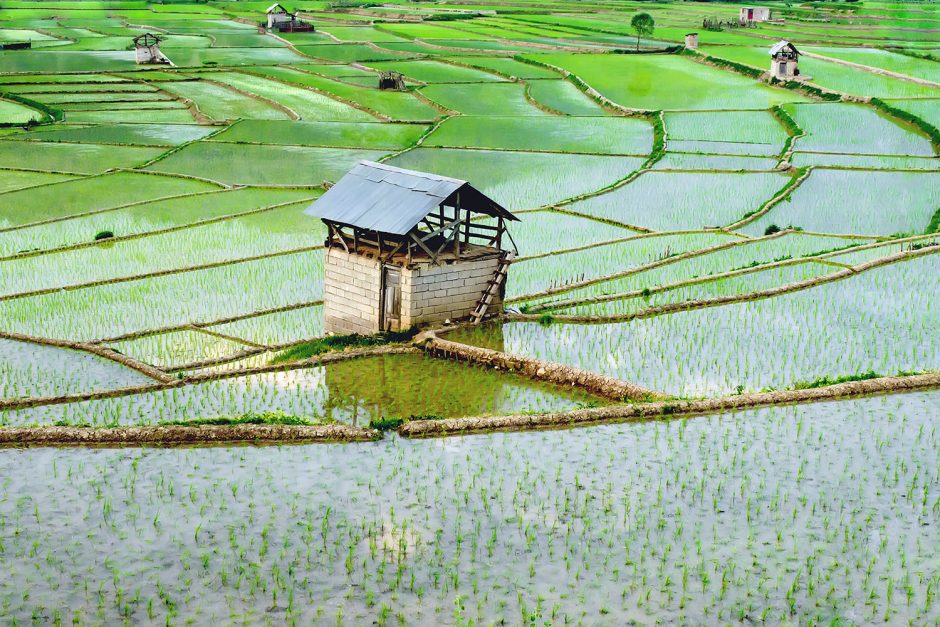Few sights may rival the mesmerising rice terraces of Asia. Vast mountainsides carved into great long steps of lush green fields, gleaming serenely under the sun. These idyllic terraces have existed for millennia, feeding generations of local cultures and leaving tourists in awe of their beauty.
So, pack up and get ready for a hike to some of the most spectacular rice terraces in the world.
1. Banaue. Ifugao, Philipines
Named the “Eighth Wonder of the World” and located over 1,500m above sea level, Banaue has the steepest rice terraces in Asia; hand-carved into Mount Ifugao over 2,000 years ago and pride of the Philippines.
An hour’s flight from Manila’s Clark International Airport takes you directly to the Banaue Terraces. Or an 8 to 10-hour bus ride from Manila takes you through the scenic countryside.
For the best panoramic views, visit Banaue between February and March or June and July, just before the harvest season. Just hire a guide to take you through the hiking trails and explore the splendid wonders of the valley.
Besides the terraces, the Tappiyah Waterfalls is also a sight to behold. You can enjoy a swim in the Gihob natural pool as well, or learn more about the local cultures at Tam An native village.
2. Yuanyang, Yunnan China
Vibrant and surreal, standing at the Yuanyang County Rice Terraces of the southern Ailao mountains, is like being in a watercolour painting, Covering an area of over 2,200 sq. km, it’s regarded as the largest rice terraces in the world with a history that stretches into the mists of time. Built and still maintained by the Hani tribe with water buffalos, the terraces are a UNESCO World Heritage Site and remain well-preserved.
An 8-hour bus ride from Kunming to Xinjie town will bring you close to the terraces. From there you’ll need to walk to the designated scenic spots.
From November to February, the irrigated terraces are like sapphire waves amidst the greenery. In late February to March, sunset turns the terraces pink peach blossom, then rosy red, amber and white. During harvest in October, a golden hue fills the mountains while the villagers get to work.
The Hani people aside, Yunnan is also home to other ethnic minority cultures of Bai, Dai and Naxi in the ancient Lijiang town near Xinjie.
You should also hike up the Meili Snow Mountain to visit the Tibetan monastery, Songzanlin Lamasery.
3. Sapa, Vietnam
Located in the northern province of Lao Cai near the Vietnam-China border, Sapa is one of the most popular tourist attractions and home to local ethnic minorities Hmong, Dao, Tay, Pho Lu and Ha Nhi. Seen from afar, the terraces are like giant step ladders to the sky. Unlike humid Hanoi, however, the weather here is always cold, so remember to dress for warmth.
There are 12 luxury trains from Hanoi to Lao Cai Railway Station, each with berth cabins for 2 or 4 people. Upon arrival, take a bus, jeep or taxi to Sapa, usually about an hour’s ride up to the mountain.
You can also travel directly to Sapa town by overnight bus, but be warned: it’s known to be bumpy and goes through some very poor roads once you’re out of Hanoi.
Like Yuanyang, Sapa too changes with the seasons. During planting in April and May, the terraces shine from the irrigation. From June to July, it’s all lush green with maturing paddy. Then in September and October, the mountains turn golden as the rice is ready for harvest.
For authentic souvenirs, Sapa market has a variety of handmade goods and ethnic clothing.
Feeling adventurous? Check out the stunning Silver waterfall in the Hoang Lien Son National Park, or hike the Fansipan mountains – both near Sapa town.
4. Pa Pong Piang. Chiang Mai, Thailand
Thailand is well-known for its diverse rice culture, but this hidden gem in the Doi Inthanon National Park is probably the best-kept secret of Chiang Mai.
Pa Pong Piang is a hamlet surrounded by forested mountains. Bright green rice terraces carpet the hilly landscape, dotted by wooden houses under a cloudy sky, with friendly villagers eager for visitors.
This isn’t your regular tourist spot though. Most visitors are local Thai vacationers. So, if you want a quiet, relaxing break from the ‘hordes’, Pa Pong Piang is the place to be. Just remember to be respectful and ask for permission from the villagers before taking their photos.
As it’s off the beaten track, there aren’t direct public transports. But the guesthouses here do have chartered pickups from the Mae Pan waterfall nearby. You’ll have to get to Chiang Mai first, then hire a minivan to reach the waterfall, and the guesthouse driver will bring you into Pa Pong Piang from there.
Best time to visit is from May till September, during the planting, growing and harvesting seasons.
5. Tegalalang. Ubud, Bali, Indonesia
Ah, beautiful scenic Bali, everyone’s favourite getaway island. And no Bali holiday is complete without a visit to the Tegalalang rice terraces, just 10 minutes’ drive from downtown Ubud.
The unique cooperative irrigation system that makes the terraces here is called Subak, said to be inherited from Rsi Markandenya, an esteemed holy man in the 8th century. The tropical climate gives the deep, verdant green cascading down the Tegalalang slopes, with tall palm trees swaying amid the surrounding forest. It’s no wonder that tourists flock to see its timeless beauty all year long.
Don’t stop at the sightseeing spot by the high road! Trek down and explore the valley for its full splendour. Be sure to bring your water and sunscreen!
More Rice Terraces
This list only covers our favourites, of course. There are many other breath-taking rice terraces in Asia, such as Vietnam’s Mu Cang Chai in the Hoang Lien Son mountainside, Nepal’s Annapurna in the Himalaya, and Japan’s Hamanoura terraces in Kyushu island.
Which is your favourite? Tell us in the comments!








You must be logged in to post a comment.